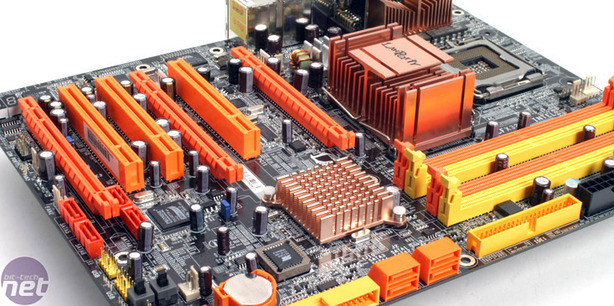Testing Methods:
With the exception of SiSoft Sandra, all of our benchmarks have been engineered to give you numbers that you are likely to find useful when actually using the products we have evaluated in the real world.We are also focusing a lot more of our time on evaluating the stability of the motherboards (and platforms) using a stress test designed to highlight any of the potential weaknesses that the product may have. That involves a gradually increasing amount of stress starting with Prime95 and expanding to IOMeter and an endless loop of Far Cry loop if all is well. This is to ensure that all parts of the system are stressed simultaneously over a period of time.
We believe that the consumer is never likely to subject their platform to this level of stress and we are not expecting every product to complete an entire extended stress test. However, most poorly engineered products fail within the first couple of hours, or even minutes, allowing us to make a conscious decision on whether a motherboard (or platform) is worth your money, regardless of how well it performs in our benchmarks.

Test Setup:
Intel Core 2 Extreme X6800 (operating at 2.93GHz - 11x266); 2x 1GB Corsair XMS2-8500C5 (running at DDR2-800 in dual channel with 3.0-3-3-9 timings); BFG Tech GeForce 7900 GTX OC video card (operating at 670/1640MHz); Sapphire X1900XTX in CrossFire (650/1550MHz); Seagate 7200.9 200GB 7200RPM SATA 3Gbps hard disk drive; OCZ GameXStream 700W power supply unit; Windows XP Professional Service Pack 2; DirectX 9.0c; NVIDIA Forceware 93.71WHQL and Catalyst Drivers 6.10.Motherboard List:
- DFI LANParty UT ICFX3200 T2R/G (Motherboard Revision: A; BIOS date: 22/12/06);
- Asus Striker Extreme (0505 BIOS);
- Gigabyte GA965P-DQ6;
- Asus P5B Deluxe Wifi-AP;
- Intel D975XBX;
- Abit AW9D-MAX;
The 450MHz CPU Front Side Bus (FSB) results were tested using 3-3-3-9-18-25-1T memory timings at stock 800MHz async, and a CPU frequency of 6x450 = 2700MHz. This was the maximum fully stable FSB overclock we could achieve. Whilst this is slower than the stock clocks of Intel's Core 2 Extreme X6800 CPU, at 2933MHz, it offers more memory bandwidth over that of the stock 266MHz CPU FSB. We are showing these results to highlight which is more important in our real world testing: CPU speed or memory bandwidth.

MSI MPG Velox 100R Chassis Review
October 14 2021 | 15:04









Want to comment? Please log in.